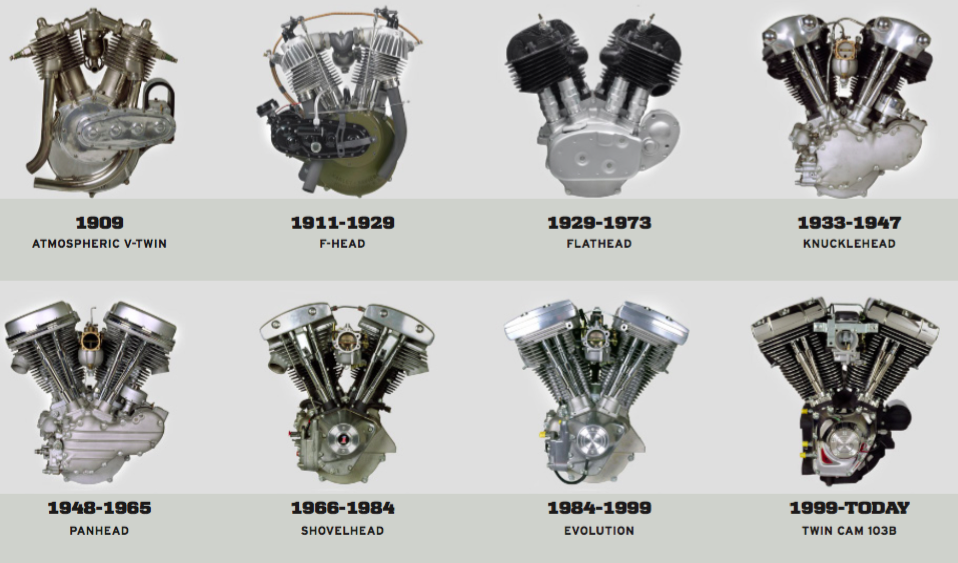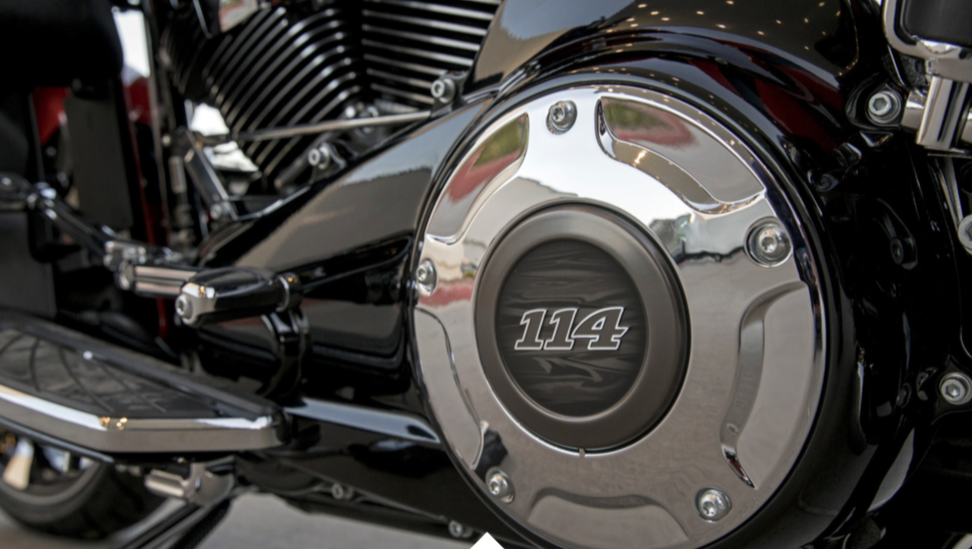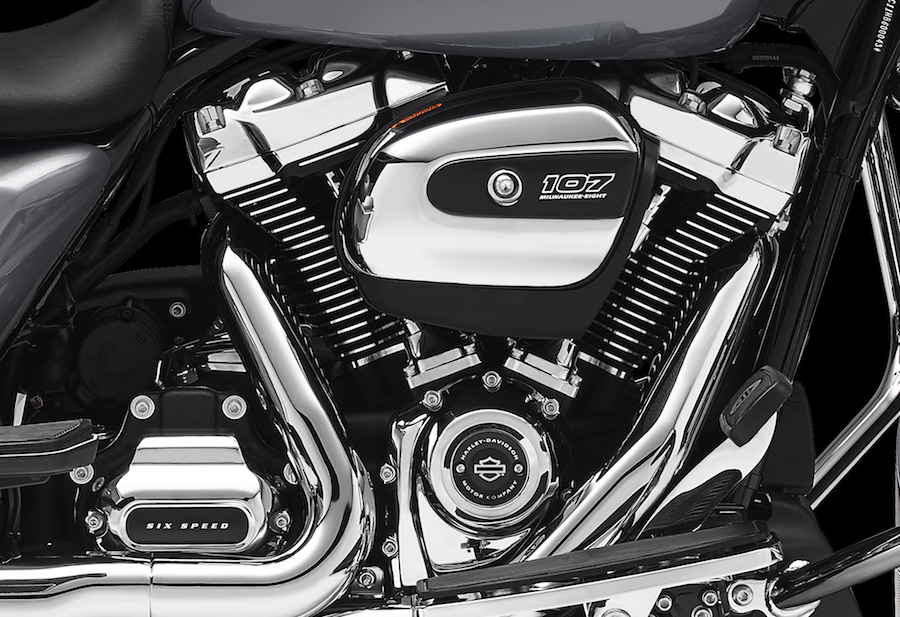When Harley-Davidson lifted the lid on its all-new Big Twin engine, the Milwaukee-Eight, last month, it caused more than the usual stir. This times the claims focused on quicker throttle response, more power and torque, a smoother ride and better feel than the current powerplant. And the company says the motivation to pursue these outcomes within the much-lauded Harley legacy was the result of feedback from Harley riders around the globe, including Australia.
“The guiding principle behind the Milwaukee-Eight engine was our voice of customer research from every region of the world,” said Scott Miller, Harley-Davidson vice-president of styling and product development strategy. “Riders asked us to create a new engine designed to enhance their motorcycle touring experience in every way, and they demanded that we stay true to our legacy and respect the defining elements of a Harley-Davidson V-twin.”

Debuting in H-D’s 2017 touring range, the all-new engine – the ninth Big Twin in the company’s history – retains a trademark 45º layout and takes its name from its eight-valve format. It will be available in two capacities and three variants to replace the High Output Twin Cam 103B 1690cc and Screamin’ Eagle 110B 1801cc engines within the touring range.
The air/oil-cooled Milwaukee-Eight 107 (107ci/1745cc) powers the Road Glide Special, Street Glide Special and Road King, while the ‘Twin-Cooled’ version – featuring liquid-cooled heads with coolant passages around the exhaust ports – is reserved for the Touring Ultra Limited full-dresser.
“We’ve listened to the needs of Australian touring riders and what it takes to provide the ultimate touring experience,” said Adam Wright, director of marketing, Australia and New Zealand. “The launch of the Milwaukee-Eight and the increased power this engine delivers will redefine what the Harley-Davidson touring line-up offers our riders.”
H-D also has a new performance engine: the Twin-Cooled Milwaukee-Eight 114 (114ci/1868cc). This ups the ante for the CVO Street Glide and CVO Limited models, replacing the Screamin’ Eagle 110B (1801cc). The remaining CVO offering, the Pro Street Breakout S, retains the 110B for now, but expect the Milwaukee-Eights to find their way into other Harley models within the next year or so.
Harley says the Milwaukee-Eight range produces 10 per cent more torque than the engine it replaces. In addition to the increased capacity, the engine features a higher compression ratio, the four-valve heads providing 50 per cent more intake and exhaust flow capacity.

Two injectors and sparkplugs per cylinder provide better combustion, while the single camshaft is said to be lighter and less complex, leading to reduced friction and mechanical noise.
The engine weighs the same as its predecessor, so the extra performance contributes to faster acceleration. The Milwaukee-Eight 107 is claimed to be 11 per cent faster over 0-100km/h while the Milwaukee-Eight 114 is eight per cent quicker. Harley’s famed exhaust note has also been enhanced.
“We took extraordinary measures to make sure this engine sounded really refined,” said Harley-Davidson chief powertrain engineer Alex Bozmoski. “For us, it was really about acceleration. It also retains the power characteristic that is the real legacy of the Harley-Davidson Big Twin: strong low-end torque with a broad, flat power curve through the midrange that’s ideal for the touring rider.”
Other improvements include better heat management for the rider and passenger, a redesigned exhaust system, a slimmer primary drive cover and low-profile air cleaner for improved ergonomics and reduced vibration. Rubber mountings and a single internal counter-balancer are claimed to reduce primary vibration at idle by 75 per cent, while retaining the character of a Harley-Davidson Big Twin.

Harley says it went to great lengths to reduce engine heat, which has long been a problem of the Big Twin. It was able to do this by reducing the idle speed of the new engine to 850rpm down from 1050rpm. That brought about a new set of challenges with regard to the charging system, which was only 17 amps at the old idle speed and already struggling to handle the load from accessories. The solution was a 50 per cent more powerful charging system, which generates 34 amps.
Chief engineer Bozmoski has been at Harley-Davidson for 34 years and was involved in the development of the past three Harley engines – the Evolution, the Twin Cam and now the Milwaukee-Eight. In the last of these he was the project leader. Bozmoski revealed the development process for the desired amount of vibration: “An important aspect for people wanting to buy a Harley was they wanted the idle to be smoother, but our core customers appreciate that characteristic idle shake.” So they tested idle vibration adjustments, from 95 per cent, to 85, and eventually lower. “At 75 per cent balance, our core customers were saying ‘This thing really purrs. It feels very refined’, and new customers liked this balance also.”
The introduction of the Milwaukee-Eight engines also brings all-new suspension to the tourers, complementing the Project Rushmore suite of updates. New Showa forks feature ‘dual-bending valve’ technology to control compression and rebound damping. The theory is to better absorb big-impact bumps that would otherwise force the fork to blow through its travel. The fork is also said to be compliant over smaller, chatter-type bumps. Meanwhile, leaky old air-suspension system at the rear has been replaced with set-and-forget hand-adjustable emulsion units, offering 15 to 30 per cent more preload adjustment (model dependent).

Further, the Milwaukee-Eight engine and suspension upgrade pick up where the Project Rushmore improvements left off. Two years ago, those changes introduced an all-new linked braking system with ABS and greater rider and passenger comfort via better seating and better rider positions. Now Harley has increased that comfort with less thermal intrusion and better suspension compliance.
Other upgrades included bright LED headlights for greater visibility at night; a bigger and better audio system with GPS; smarter; easier access to panniers, which now feature an intuitive fastening arm; and aerodynamic tweaks to the Batwing and Road Glide fairings to improve rider comfort and weather protection.
Models for Oz and NZ


Updates at a glance
More power
Each Milwaukee-Eight engine produces up to 10 per cent more torque, with 150Nm at 3250rpm for the 107ci (up from 138Nm) and 165Nm for the 114ci (up from 156Nm). In addition to increased displacement, the new powerplant features a higher compression ratio and four-valve cylinder heads with 50 per cent more intake and exhaust flow capacity. The valve train requires no adjustment as the design of the rocker arms enables valve lash to be set at the factory for life.
Reduced vibration
The rubber-mounted Milwaukee-Eight engine features a single internal counter balancer that cancels out 75 per cent of primary vibration at idle for a more refined feel and more comfortable experience for rider and passengers while retaining the character of Harley V-twin engines.
Richer exhaust note
Lighter valves, a single camshaft, optimised cover designs and improved driveline components eliminate mechanical powertrain noise. The engine intake and air cleaner are designed to reduce intake sound while ensuring maximum air flow. As a result, the new Milwaukee-Eight engine is mechanically quieter, enabling a richer exhaust tone, and meets all global noise and emissions standards while allowing the unmistakable rumble of its exhaust note to resonate.
Heat management
The Milwaukee-Eight engine offers improved rider and passenger thermal comfort due to reduced heat absorption, increased heat ejection and a redesigned exhaust system. Each of these engines features a precision cooling strategy based on the specific demands of the motorcycle model, using a targeted flow of either oil or liquid coolant around the hottest areas of the cylinder heads. A new knock sensor for each cylinder enables more precise timing control.
Improved charging
The Milwaukee-Eight engine charging system delivers 50 per cent more output to the battery at idle to better support the power requirements of touring, including accessory lighting, performance audio, and heated gear and other accessories.












